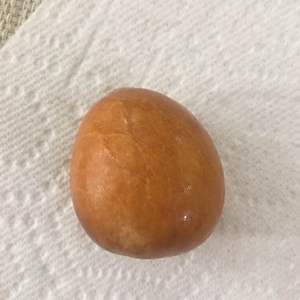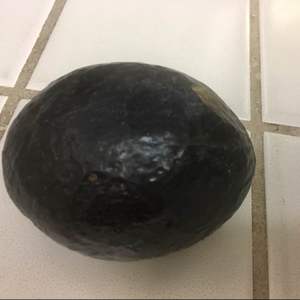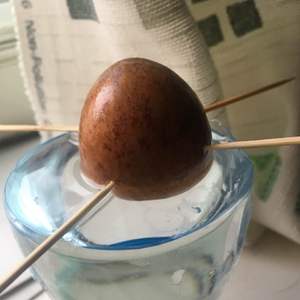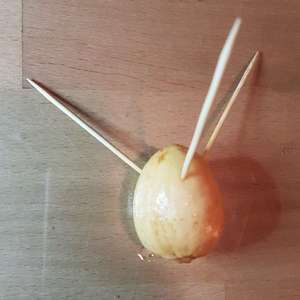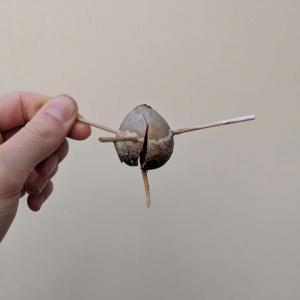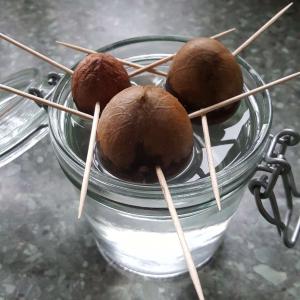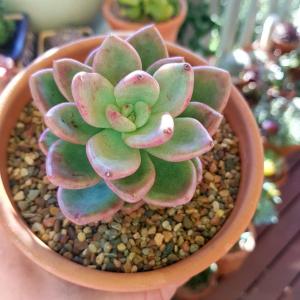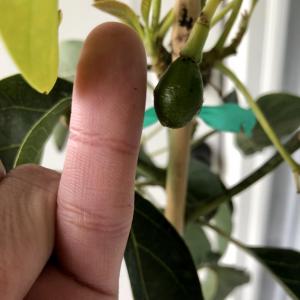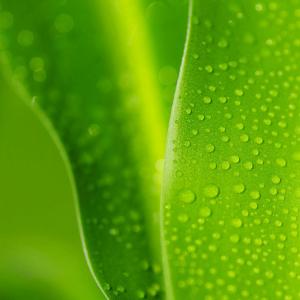
This crunchy and creamy salad is a favorite go-to dish for many. It has all the nutritious vegetables including kale, avocado, scallions, carrot, tofu, red pepper, and others. Tahini and lemon juice dressing gives it the perfect taste. The sesame seeds and cashews on top are bonuses.

Ingredients
Chicken Cashew Salad
- Napa cabbage, green cabbage, or kale – 5 cups, chopped
- Rotisserie chicken – 2 cups, shredded
- Tofu
- Carrots – 1 cup, shredded
- Green onions – 1 cup, finely chopped
- Roasted cashews – ¾ cups
- Fresh cilantro – ¼ cup, finely chopped
Dressing
- Tahini – ¼ cup
- Tamari – 2 tablespoons
- Rice vinegar – 2 tablespoons
- Toasted sesame oil – 1 tablespoon
- Maple syrup – 1 tablespoon
- Garlic clove – 1, grated
Cooking method

Prepare the rotisserie chicken. You will get a burning effect. Once it is cooked in your rotisserie shred chicken pieces to add to the salad. Make the dressing by mixing all the ingredients in a glass jar. Make the consistency smooth. Now put all the vegetables, chicken, and cashews in a large bowl. Add some salt for seasoning. Pour the salad dressing you just made on top. Now toss everything well. You will love the smell of sesame oil. Serve the salad immediately to get the best taste. You can refrigerate and store it for two days.
Tips
If you are planning to make the salad beforehand, then it is better to use kale and green cabbage. Avoid using Napa cabbage as it might wilt. If you can keep it in an airtight container, the cashews will also stay crunchy. If you don't find tamari in the market then you can use soy sauce instead. Tamari is very similar to soy sauce, except that it's less salty. You can serve the salad cold without spoiling its original taste. You can also use coconut anions for a similar taste.
Napa cabbage is a Chinese cabbage that gets tender easily. It is sweeter than the normal cabbage. You can use the normal cabbage as Napa cabbage may not always be available in the market. As you don't need to reheat it, you can just grab and go to your office and enjoy this delicious salad for lunch.
Recipe variations
You can easily turn this dish into a vegan. Just replace chicken with chickpeas. You will get the same nutrition. You can also add cooked quinoa, farro, or brown rice. You can use sunflower or pumpkin seeds instead of nuts. You can make the Asian variation of this salad with rice. You can do it with leftover rice and chicken. First, put the salad on the platter and then layer it with rice, chicken, and roasted cashews. You can use other dressings than tahini-tamarind dressing.
Health factors
You will be surprised to know that despite its size, cashews are very fulfilling. Try having a number of them when you are hungry. It contains protein, fiber, and healthy fats. If you add it to your salad, your satiety will increase and you won't crave much for foo. So, you will be able to manage your weight. Kale and cabbages are green nutritious veggies. They contain loads of vitamins and fiber to keep you healthy. This nutrient-rich salad can easily replace your carb meal and help you stay healthy.
Cashew crunch salad with sesame dressing gives an Asian taste to your salad. But the tahini-tamari dressing adds a Chinese flavor to it. If you can cut the vegetables and keep them in zip-lock bags in the freezer then you can make this salad very quickly anytime. It's a great side dish to serve your guests along with the main course.

Fresh, summery, perfect — quinoa salad with fresh corn, buttery avocado. You'll need marinated tomatoes and lots of fresh herbs …
Do I love quinoa? No.
Does this summery salad that's luscious and juicy, even contain quinoa, actually mean I love it? YES.
Also, if you hate quinoa – I think I can get you eating quinoa salad. I really do.
This gem of a salad is a win for anyone who:
- I can't appreciate a really good textured salad, because even the little bite sizey bits!
- My boy likes to be in the sun rather than cooking for hours (aka THIS RECIPE IS SO EASY)
- We accept all who does like or does not like quinoa.
- Celebrates a good meatless meal.
- Big, juicy, summery flavor has a tendency to go weak in the knees.
There is staggering amount of texture and flavor. Our base is quinoa and corn, we have marinated tomatoes as the juicy crown jewel, avocado to butter it all up a bit, shallot, chives, and cilantro to wake you all the way up, lime zest, and lime juice, all to round it out with a little something, and Cotija cheese so it's just the slightest bit crumbly and creamy (omitting it if you're vegan).
Let me just say this: I've really missed loving a quinoa salad as much as I've come to love this one.
Maybe just a salad in general and just maybe a salad.
Healthy, but not too healthy. Cranky, textural, cravey at all times. Colorful and happy. Exactly how I like to eat.
If you keep the avocados out until just before serving, it becomes a lunches made ahead thing that will keep the mood bright all the week long.

Tastes like summer! This juicy salad! Pop of sweetness from fresh strawberries, this is served with chipotle chicken, sweet corn, avocado, cilantro vinaigrette and bacon crumbles for crunch.
Here comes summah summah summashhhhhtime!
It really is here (I kinda can't believe it since here in Minnesota we were all "April Blizzard" a minute ago), but you guys, it's totally here. I totally had it for dinner last night and And …
Here's what it tasted like:
- juicy strawberries
- crisp salty bacon
- sweet green lettuce
- bursts of sweet corn
- creamy avocado chunks
- … smoky chipotle grilled chicken! REPEAT: GRILLED!
And today from the What's Gaby Cooking Cookbook, a Summer Chipotle Chicken Cobb Salad is coming to our hearts: this dream team of ingredients, otherwise known as a Summer Chipotle Chicken Cobb Salad.
I am reminded that I published those BEST EVER chicken tinga tacos, I told you about my friend Melissa's amazing book, and then I started to talk about how I hardly ever promote books? So I turned around and told you how great THIS one was, too, but then? LOL to me. In fact, it's just dumb luck that both of these came out when they did.
I'm not being paid for the cookbook promotions – just the ones we like and let you see a glimpse of their best recipes.
This one is one that I like and that long list goes on. This might be one of its best recipes, and it is and. This salad couldn't not use the cilantro vinaigrette, tied with it was the cilantro vinaigrette. I don't know Gaby says but the salad needs the champagne vinaigrette but GABY COME ON WHY WOULD YOU DO THAT TO US?! After one good lick of that cilantro dressing, you're done. Goodbye. This is your life now.
Okay, salad ingredients. As mentioned, there is a lot of fresh summery goodness going on here, and it looks like so:
The "involved" part of the recipe if you can call it that, is just plopping your chicken in some spices and a few chipotle peppers and letting it marinate for awhile before grilled.
WORTH IT, you guys! So worth it.
But maybe normaler to take a picture of the grilled chicken than the raw marinated stuff who said nothing about normal.
We ate this salad on a deck on a random Tuesday night, and Bjork and I mega loved every lip licking juicy bite.
It's little spicy, a little crunchy, but the real sweet bite in-between are super, super rewarding.

With a seed/pit at the centre, the avocado fruit is a green, creamy superfood. It is renowned for its many applications. Due to their high content of beneficial monounsaturated fatty acids, avocados can enhance a variety of cuisines. They are also a good source of calcium, potassium, vitamins, and antioxidants. Aside from being used in food, avocados are also fantastic for your skin. They may promote thicker, stronger hair and nails. One can also use avocados as homemade facial masks to prevent roughness and dryness on the skin.
The advantages of avocado for your face, skin, and hair are listed below.
1. Acne control
Lauric acid present in avocado has antimicrobial and anti-inflammatory properties which aid in the treatment of acne. Avocado's moisturising abilities may shield against dryness, which is a frequent cause of acne and ageing.For treating acne, avocado combined with oats and lemon work well. Oats aid in bacterial cell removal and inflammation reduction while lemon is a great bleaching agent.
How to use:
Combine one avocado's pulp with 2 tbsp of ground oats and a few drops of lemon. Apply this paste to your face. At the end of 30 minutes, rinse it off with cold water. Use this cure four times each week.Combine 2 tablespoons of cucumber juice and ½ cup of avocado pulp. Apply this paste to a clean face and let it sit for 10 to 15 minutes before washing it off with warm water.
2. Antiaging
Oleic acid found in avocados is anti-inflammatory which reduces skin redness, prevents wrinkles, and fights inflammation. Additionally, avocados contain vitamins C and E which are very good for your skin.Avocados are a good source of antioxidants like lutein and zeaxanthin, which prevent the impacts of free radicals, which are the cause of premature ageing.
How to use:
Use by blending 1 teaspoon of coconut oil into the avocado slice's pulp.Apply the paste to your skin.
After 30 minutes, wash it off.
Use this treatment consistently for soft, young-looking skin.
3. Moisturizing the skin
Avocado oil, which is rich in vitamins A, D, and E provides your skin with deep hydration and moisturization. Moreover, avocado oil helps soothe the skin, promote skin healing, and protect against sun damage.Avocados' linoleic and oleic acids also aid in skin healing and restoration.
How to use:
Apply a thin layer of the mashed avocado slice to over your skin. After ten to fifteen minutes, rinse it off with warm water.Mix half an avocado, egg yolk, and ½ cup of yoghurt. If desired, add a few drops of lavender or rose essential oil into the mixture. Avoid your eyes when applying the paste to your skin. Apply a second layer of the paste after waiting for five minutes. After ten minutes, rinse it off.
4. Exfoliating the skin
Avocados' mineral and antioxidant content make them a gentle exfoliator for the skin. Dead skin cells, excess oil, and clogged pores can all be removed from the skin by applying avocado to it. Additionally, avocados nourish skin, promoting skin renewal and regeneration.How to use:
Combine 2 tbsp of coconut or almond oil with a slice of avocado. Add 1 tbsp of brown sugar to this paste. Gently massage your skin with this mixture, paying special attention to rough spots like the knees and elbows. With warm water, wash it off.To exfoliate your skin, use avocado seeds or pits. Simply peel out the seeds' skins and grind them into powder. Combine one tablespoon of this powder with one tablespoon of honey and olive oil. Massage this mixture over your skin and wash it off after 15 minutes. Use this scrub once a week to make your skin softer.
5. Sunburn Treatment
Your skin can become damaged by too much sun exposure, which can sometimes result in sunburn. Applying avocado to sunburned skin helps ease the skin's discomfort and minimise redness and inflammation.Avocado's ability to treat sunburns is mostly attributed to its protein, lecithin, beta carotene, and vitamin D and E content. Avocados also promote skin healing and skin hydration.
How to use:
Mix half an avocado with ½ tablespoon of lime juice and 1 tablespoon of yogurt. After applying this mixture over the affected areas for 15 minutes, wash it off.Because avocado oil has a high SPF, use it to treat sunburns. Apply a solution made from 5 drops of avocado oil and 3 tablespoons of aloe vera gel on the skin that needs treatment.
While commonly used for internal consumption, avocados can also be effectively used to treat skin problems and to provide a natural glow to the skin.

Avocado Tree Planting Instructions
Avocado trees should ideally be planted outside in the spring. This gives the tree plenty of time to establish itself before the chilly winter weather arrives. This is particularly crucial in the hardiness zones for avocado trees in the north. Select a planting place where there will be enough space for these tall trees to flourish. If you're planting more than one avocado tree, space them at least 30 feet apart and at least 10 feet away from any buildings.
Remember that avocado trees have very delicate roots, so while planting them, try to avoid disturbing them needlessly. Excavate a hole that is larger than the root system. Since planting a tree too deep or too shallowly might lead to issues, the depth of the hole should typically equal the height of the root ball.
Very young, delicate, and immature trees may benefit from support since the trees are sensitive to strong winds. Your tree will stay upright and healthy if you choose a planting place that provides wind shelter. Just make sure your tree gets lots of sunshine and soil that drains adequately. Before planting, amend the soil with sand or similar well-draining substrate if the soil isn't in the best possible condition. It is also possible to cultivate avocado trees in containers, although this will ultimately restrict their development.
Care of Avocado Trees
Light
The avocado tree need a lot of sunlight to grow, like other tropical plants. Give this tree at least 8 hours of direct sunshine every day when you plant it. Although these trees may tolerate some shade, full sun is optimum for their growth and fruit production.
Avocado trees like loamy, rich soil that drains well. In order to prevent root rot, it's crucial that the soil be aerated and doesn't retain too much water. Ideal soil pH ranges from 5 to 7, which range from acidic to neutral. Alkaline soil may harm these trees.
By adding a layer of mulch all around the tree, you can preserve its shallow root system and help the soil retain the correct amount of moisture. In order to prevent smothering the roots or creating collar rot, be sure to keep the mulch approximately 6 inches away from the base of the tree.
Water
Deep, infrequent irrigation is beneficial for avocado plants. This promotes root development that is stronger and deeper. Wait until the soil starts to dry up before providing enough watering. The avocado tree may need more regular watering throughout the summer when it is hot and the weather may be dry. Young trees also need to be watered more often as they grow. Around 2 inches of water per week should be given to mature trees.
Thermodynamics and Humidity
Unless you want to grow an avocado tree inside, these well-known fruit trees can only be cultivated outside in USDA hardiness zones 9–11, restricting them to tropical and subtropical regions. They like growing at temperatures between 50 and 85 degrees Fahrenheit and are frost-sensitive.
Fertilizer
An avocado tree will produce more fruit and develop healthier if fertilized throughout the growing season. Depending on the exact directions contained with your selected fertilizer, begin in the late winter or early spring and continue feeding until the autumn. Make sure the fertilizer you choose has high levels of nitrogen since this tree needs it. It works well to use fertilizers made particularly for citrus or avocado plants.
Pollination
An avocado tree may be challenging to pollinate. These trees have blooms that have both female and male components, or what are known as "perfect" flowers. The female and male sections of avocado tree flowers bloom at different times, making self-pollination feasible but not always successful. It is essential to have two avocado plants for best pollination.
There are two types of avocado trees: type A and type B. The male portions of Type A trees open in the afternoon of the second day after the female parts open in the morning of the first day. The male portions of Type B trees open in the morning of the second day, whereas the female parts open in the afternoon of the first day. Cross-pollination between the two varieties is made feasible by these various timeframes. For the greatest outcomes, plant both type A and type B trees when selecting which ones to plant.
Avocado Tree Types
The three primary kinds of avocado trees are Mexican, West Indian, and Guatemalan. There are a number of avocado varietals available within these categories.
Hass: One of the most well-liked avocado kinds, you can often find Hass avocados in supermarkets. It is a cross between the avocado cultivars from Guatemala and Mexico. This tree is a type A, and its fruits have thick, rough surface and a creamy, rich inside. In comparison to other types, it is more heat sensitive. When cultivated independently, Hass avocado trees are known to generate a respectable amount of fruit.
Fuerte: The Fuerte avocado, another well-known variety, is a type B tree that is often planted alongside Hass avocados. This type is also a cross between Mexican and Guatemalan strains. Large, oval-shaped fruits with generally smooth, thin skin that comes off easily are produced by these plants. The fruit's oil content is lower than that of Hass avocados. These trees are better suited for the northern limits of the avocado growth zones since they are also more heat-sensitive.
Pinkerton: This Guatemalan tree of type A is well-liked for its compact stature and abundant fruit production. It yields oblong fruits with flesh that is creamy and luscious, much like the Hass avocado. To give a sizable crop, these plants need an avocado tree of type B.
obtaining avocados
Since avocados need a lot of time and commitment to develop, picking them from your own garden is fulfilling. You may anticipate fruit on nursery-purchased trees in three to four years. Avocados grown from seeds might take five to thirteen years to bear fruit.
Wait until the avocado reaches its full size once the fruits start to emerge. Avocados are harvested as soon as they reach their full size since the fruit does not ripen on the tree. Bring the avocados indoors, where you should let them to ripen on a counter. Test the avocado's suppleness by giving it a little squeeze. Enjoy the results of your labor after the meat is tender but not mushy.
Growing Avocado Trees in Containers
Avocado trees can be preserved in pots, however they won't grow to their maximum height in them. Due to the ease with which potted trees may be relocated to a sheltered place when cold weather strikes, this is perfect for tiny yards or gardens close to the northern limit of the avocado's growth zones.
It is best to choose young trees or dwarf kinds since they will remain tiny for a while. Make sure the container you choose has unblocked drainage holes and good drainage. Breathable materials, like terra cotta, are a wise option since they allow both air and water to pass easily through the container. Sand and compost are examples of well-draining soil you may use to fill the container.
Pruning
Avocado tree pruning will promote more controllable, bushy growth. Starting while trees are young is ideal. If the plant was produced from seed, begin trimming when it was just 6 inches tall by chopping off the top pair of leaves. Trim back 6 inches after it reaches a foot in height. After that, trim the tree every year.
Mature trees need to be pruned every so often to keep them tidy and provide enough room for light and air to pass through. While extensive pruning should be done in the early spring, light pruning may be done at any time of the year. Any low-hanging branches should be removed to maintain the tree tidy and accessible. To provide enough light and ventilation, prune dense regions. Dead wood should be pruned and V-shaped branches should be removed. If you want to maintain the tree on the smaller side, keep pruning the tips off the branches. Always start off cautiously and just cut down a third of each branch's length at a time.
Trees for Avocados to Be Grown
Grafting, layering, or cuttings are often used for propagation. The greatest time to propagate is in the spring when there is a lot of fresh growth. While layering and beginning cuttings are used to create duplicate plants, grafting is often used to blend the beneficial traits of two distinct avocado kinds. Here is how to carry out each propagation technique:
Cuttings
Sharp scissors, potting soil that is both wet and well-draining, a tiny container, and IBA rooting hormone are all required.
Choose fresh growth in the spring that is 5 to 6 inches long and has a number of unopened leaves.
Cut the branch of the new growth at a 45-degree angle using sharp shears.
By scrubbing the bark on each side of the cutting, you wound the cut end. This will promote the growth of roots.
IBA rooting hormone is applied to the cutting.
Bury the cut end in a wet, drained area of the ground.
Place the cutting in a sunny spot while keeping the soil wet.
Gently pluck the cutting to check for resistance after a few weeks; this shows that the cutting's roots have grown. Repot the cutting either outside or in a bigger pot.
Grafting requires the use of sharp snips, a knife, and a covering material, such as grafting tape, to protect the grafted region.
Just like if you were taking a cutting, do steps 1 and 2.
Remove the cutting's tip and any leaves it may have at that time.
Then, make an incision in the tree you want to graft onto by shaving off some of the bark.
Make sure the cambiums of the tree and the cutting are in contact.
Make care to cover any exposed portions before fastening the cutting to the tree.
The grafted branch and the parent tree should merge together in a few weeks.
Air Stacking
To attach the rooting media around the tree, you will also need rope or tape, as well as a rooting medium that may be wrapped around a limb.
Choose the branch you want to use for your new tree.
Cut two rings around the branch with a clean knife to expose a portion of peelable bark.
After the bark has been taken off, scrape the interior branch to remove the cambium.
Compost in a tiny bag (make sure the compost is surrounding the branch, not the bag) or another rooting media may be used to cover the exposed inner branch. Enclose the branch in safety.
It should take several weeks for roots to form. Cut the branch below the newly created roots if this happens, then plant the new tree.
Avocado Trees: How to Grow Them From Seed
A easy and enjoyable endeavor is growing avocado trees from seed. It's crucial to remember that seeds do not always result in trees that are exact replicas of their parent plants. A tiny pot, well-draining potting soil, toothpicks, a sharp knife, an avocado seed, and a container of water are all need for this project. then adhere to these guidelines:
Make three or four holes all the way around the avocado seed with a sharp knife.
Put the toothpicks through the openings. By doing this, you'll build the supports the seed needs to float in the water.
Put the seed's thick, or bottom, end, into the water. The water should contain around one-third of the seed.
Place the seed in direct sunlight, and replace the water every day.
After a few weeks, the top of the seed should develop leaves and roots.
After that, carefully put the seed in a soil that drains properly.
Overwintering
Avocado trees don't need special care in the winter when they are cultivated in the right zones. It is ideal to maintain trees in pots so they may be moved inside or to a location shielded from cold weather if they are grown on the northern borders of their growth zones.
Typical Pests and Plant Illnesses
Mites, caterpillars, borers, lace bugs, and thrips are a few typical pests that may trouble an avocado tree. Cankers, fruit rot, sun blotch, and root rot are a few diseases. Be on the lookout for these pests or any early illness symptoms. The best method to address any emerging issues before they endanger the health of your avocado tree is to take quick action.



